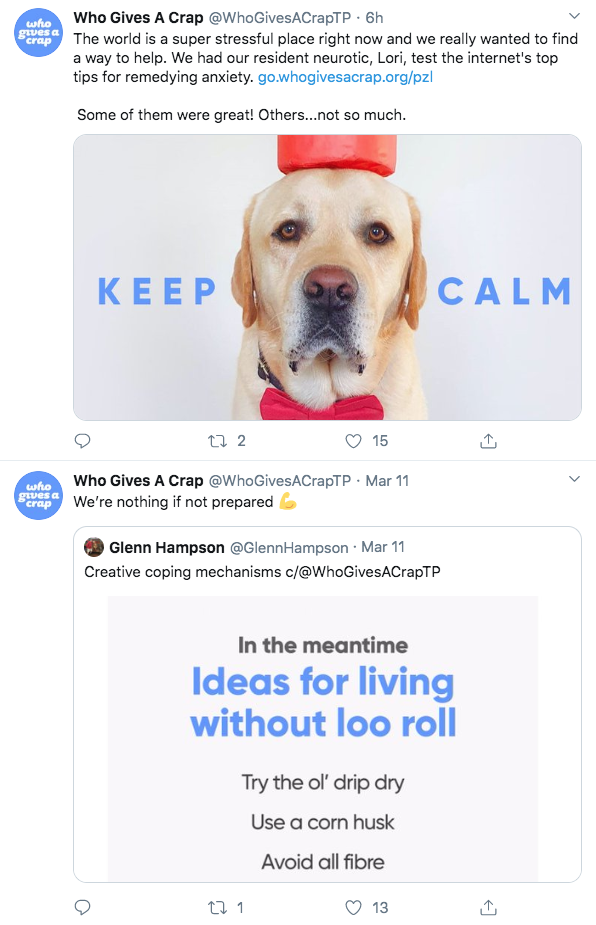Starship Articles

Unless you're already "in the know", you might think of blockchain technology as something new, some sort of scam, or something to do with cryptocurrency. In fact, blockchain concepts have been around since 1982, when cryptographer David Chaum first proposed the concept in a dissertation. The modern decentralised blockchain as we know it was popularised by 'Satoshi Nakamoto' in 2008 for the cryptocurrency bitcoin, and remains widely in use by cryptocurrencies – hence its common association. However, the technology itself does have uses beyond that space.
What is Blockchain?
At its core, blockchain technology enables transactions between two people (peer-to-peer) without a third-party handshake or verification. Typically it is in the form of a decentralised, public, digital ledger of records (the "blocks") that record transactions over multiple computers and which cannot be altered without altering every block. Participants can therefore verify and audit transactions independently and inexpensively – i.e. an authentication system run by the people that isn't affected by third parties. Private and hybrid blockchains also exist, but need extra thought put into their security.
Beyond cryptocurrencies and finance, blockchain technology has been trialed by Walmart in supply chain monitoring for lettuce and spinach, and has also popped up in games, energy trading, and music distribution. At its core, due to its nature, it often provides for a more secure transactional experience, one which puts consumer data back into their control. Without a third party handshake in the way, consumer information is less likely to be harvested, used, or even sold. This might sound like a bad thing for marketers and brands used to finding ways to collect consumer data or rely on traditional programmatic ways to reach out to new customers, but it also provides opportunities for brands willing to embrace a potential new way forward.
More Marketing, Less Crypto
Blockchain technology already exists in the marketing space. For example, the Brave browser, recommended by the New York Times in 2021 is a privacy-based browser with a blockchain digital ad platform. As such, Brave users have to opt-in in order to see ads, and received BATs (Basic Attention Tokens) for ads they interact with. In other words, brands trade with Brave users for attention, rather than the usual model where users are bombarded with ads they might not be interested in and brands trade with third party platforms for ad space. Other initiatives in a similar vein include Blockstack, where instead of users trading their data to access apps, Blockstack acts as a key where the data returns to the user once they're done using the app. There's also adChain, built on the public Ethereum blockchain, aiming at preventing fraud in advertising by incentivising users to create a ledger of trustworthy advertisers.
As you can see, the basic driving concepts between all of the above are:
- Consumer privacy
- Consumer choice
- Authenticity
- Direct transaction without third party
While the above can feel challenging to traditional marketers, brands can look at it as a chance to improve their customer goodwill by embracing principles of transparency and brand integrity. By placing customer privacy first, brands can appear more trustworthy – you're not spying on your customers or knowing more about them than you should. By incentivising customers to trade directly with your brand, you might not only save in terms of ad spend, but also creating a more genuine, mutually beneficial relationship with your customer. Rather than the crapshoot that programmatic advertising can sometimes be, with false ad clicks and fake ROI, a blockchain-based advertising strategy can further streamline your marketing budget.
Incentivising Consumer Choices
Loyalty programs are a favourite marketing tool for brands. Often, the point is to try and exert control over customers by locking them in to your brand with points. However, studies have shown that more than 25% of participants in loyalty programs never redeem their points, often because of time-sensitive windows to do so. Points expiring can lead to customer frustration, particularly in products that have a high price point or that don't require renewal within a short period of time. This can aggravate customer indifference to the brand and to loyalty programs in general.
With blockchain technology, however, loyalty programs can be efficiently interlinked across every touchpoint, and be applied more flexibly. In other words, loyalty programs can be extended across different brands, leading to cooperative programs that make loyalty points more easily spendable and earned across the board, in a way that existing cross-pollinated non-blockchain programs can't currently achieve in a secure or dynamic way. For example, American Express has incorporated the Hyperledger blockchain in order to reward points to consumers based on individual products, rather than spending behaviour at particular merchants. This and other ways that blockchain technology serves to free up individual spending and allow merchants to easily track reward points allows for more flexible customer loyalty strategies.
Curious to know more? Want advice on how blockchain tech can help your brand? Give us a call.
How is 2022 nearly here? Maybe it's work from home compressing all our weeks into a singular time loop, but I was surprised to head into the city recently and realise that Myer had put up their Christmas decor. Is it really December already? Time seems to be compressing further and further... it feels like the US insurrection was only a month ago. Wasn't the wild Gamestop saga this year as well? Along with Delta... well, now Omnicron, more months of lockdown in Melbourne, Squid Game becoming the most-watched show on Netflix...
What a strange year this has been.
With our standard for the 'new normal' now ever-changing and mutated forms of COVID-19 looking to be part of our life for more than the near-future, here are some upcoming trends that might come into play in 2022.
1. An Increasingly Digital World

Social-media and digital-based shopping have become increasingly dominant, to the point that Australia Post has been suffering delays for months. Auspost reported an all-time eCommerce high in Australia in 2020. As to 2021, their September report notes:
- A 23.4% growth in the last 12 months in Australia
- 41% of the online purchases were from NSW alone
- Aussies have been purchasing more across most categories
- Online shopping in Victoria declined by 8.8% since last year, but has increased again more recently
There are right ways and wrong ways to cash in on the increased customer push toward online shopping. Bombarding your customers with random SMS deals (without an opt-out option) definitely isn't it, I can assure you. Speaking of which: Dear Oxfords Direct, please stop sending me messages. It's likely that 2022 will continue with this digital shopping trend, especially with people now more comfortable with the ease and convenience of online shopping, and possible lockdowns always on the horizon. If you're a retailer, here are some tips and tricks that might help:
- Be eCommerce friendly: not just on desktop.
- Be upfront about how long delivery will take. Consider having alternative same day delivery options.
- If your brand doesn't have online shopping, think of an alternate offering that you can put forward that will allow you to have some eCommerce capacity.
- Don't bombard people with random discounts or unilaterally add them to newsletters that they never signed up to. Find a way to grow your mailing lists or social media followings: whether by bribing customers with 10% discounts or more. Recently, I was in a hotpot restaurant that offered free dessert if I followed them on social media. Do something similar.
- Maintain a social media presence that fits the character of your brand and the target audience you're aiming at.
- Ensure that your social media not only informs potential customers of your offering but has posts that makes it worthwhile for them to be part of your following.
- Stand out from the crowd: if you're just the same as every other competitor out there, it's going to be all the harder to get that buy in.
- Follow up: if someone didn't go the extra distance and check out, send a gentle follow-up email. You can do this automatically.
- Customer experience. You'd be surprised how important this is.
2. Voice activation

With Siri, Alexa, and Google Home etc becoming more and more common, voice activated inquiries and shopping are a way of making products more accessible to a larger market. Poised to become increasingly a larger part of a world that might be a long ways away from returning to pre-COVID-normal (if at all), in 2022, try making your product offering conducive to voice search. You might see a difference. Some tips for optimising for voice search:
- Voice search is conversational, so your keywords and content needs to be geared towards answering a user's questions.
- This often means long-tailed keywords. If you were looking to buy a purple sweater, you might google "purple sweater melbourne" or something similar. If a client was using voice search to buy a purple sweater in Melbourne, what might they say? Trying to predict such questions will help you optimise your content.
- Further hint: question-based keywords, like 'why' and 'where'.
- Tag your content with terms that customers are likely to use to find it. Don't be too technical.
3. Even More Video
With Tiktok, Instagram Stories, and Twitter fleets and such becoming an increasing part of the social media landscape, short video–especially live video–should be a key part of your marketing strategy if your product lends itself towards video. Given how expensive as video might be, however, they should be carefully thought out, or they might be a waste of money or worse. Some tips:
- Decide on the point of the video. Is it to push people to your website? Buy a particular product? Launch your brand?
- Have a call to action, one that's memorable or simple to access, especially from a mobile phone.
- Sprinkle with keywords in case people need to search it out afterwards.
- Carefully vet people whom you use for live video: they'd have to be trustworthy.
- The first few seconds are key: people have a short attention span, and there's a lot of noise out there.
Happy holidays! Hope this will be helpful to you in the coming year. Want to know more? Get in touch.
“Do you want to be famous?” was the casting call used by the new HBO documentary, Fake Famous, luring young people into a new reality TV show aimed at creating a new influencer. Fake Famous is directed and narrated by tech journalist and Vanity Fair correspondent Nick Bilton. The title of the documentary clues viewers into how the director actually views this multibillion-dollar industry:
“[T]he documentary mocks influencers for a grueling hour and a half, casting an entire ecosystem primarily built and run by women as, one male talking head put it, people who are “not employed” and “without a sense of purpose.”
The cherry on top of this whole thing? Influencers whose content was used as examples in the film told me that HBO never contacted them for permission to use their footage, or even let them know that the footage would be in the documentary. One influencer, Courtnie Hamel of @CourtandNate, told me that when she saw her home featured briefly in the film, she was upset by how “intrusive” it felt. Another, sewing and DIY content creator Mimi Goodwin from MimiGStyle, had no idea either. A spokesperson for Goodwin told me that they were completely unaware that her photo had been used “in such an unflattering and potentially defamatory manner” before I told them.” --Buzzfeed
Thanks in part to social media, we have long passed the point where people can only be famous because they’re politicians, musicians, actors, or athletes. Influencers are not just people with a lot of followers: they’re people who provide content that people value. While the industry isn’t perfect, no industry is. The best way for brands to utilise influencers for the benefit of their product is to respect the influencer industry as a new form of marketing, and, as with any tool, consider its value with regards to reaching the brand’s desired target market.
Understanding Influencer Marketing
Effective influencers for a brand should be authentic people within their community, with fans who trust them. Ideally, they also have experience relevant to what they’re advertising: like a beautician vlogger advertising a skincare product. As influencers create their own content, it does require brands to trust them to follow the brand’s message, but this content does often appear more authentic than a carefully managed and directed traditional advertising. There are standard prices for influencers that often depend on the number of followers or views.
Influencers help brands connect with people who brands might otherwise be hard to reach, particularly now that the world has so much white noise. Followers of an influencer often watch their content daily, and trust them where they might be suspicious of ads that they see on traditional advertising like TV or outdoor.
Influencer vs Brand Ambassador
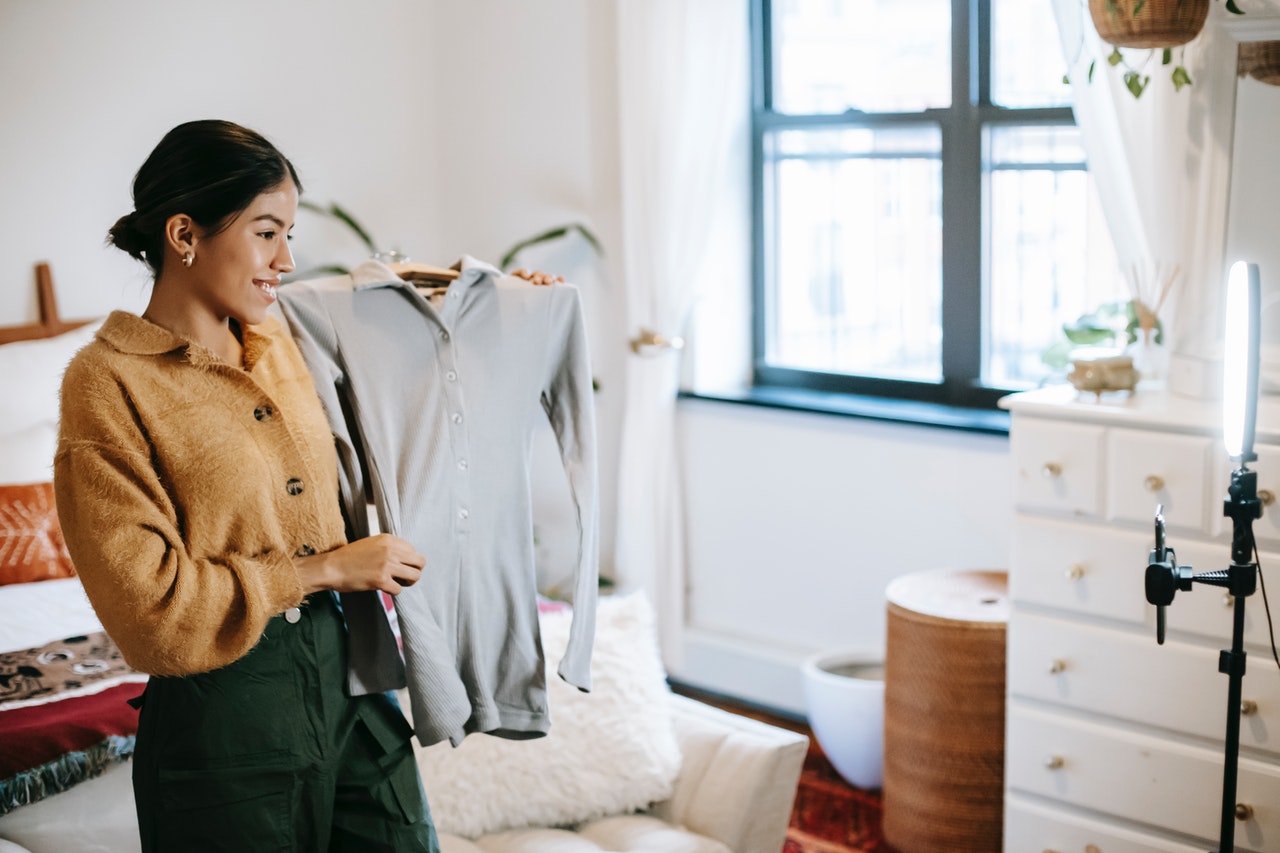
Brand ambassadors are typically people with long-term contracts, who become the “face” of your brand. Influencers are people with a following within their communities that often recommend products to their followers. There are micro influencers (people with smaller followings), celebrity influencers, vloggers and bloggers and more.
Mega-influencers are hyper-famous people, like A-list celebrities. They can charge a million dollars per post or endorsement, but often don’t have real conversion power—depending on the market in question. The power of a mega-influencer can be immense, however. Recently, one of the most popular Chinese dramas, Word of Honor, catapulted its two main stars, Zhang Zhehan and Gong Jun, into the upper lists of Chinese actor fame. When they chose to endorse the same shade of Tom Ford lipstick (03Lark) together, it instantly sold out in China, along with the preorder, then sold out in the rest of the world within days.
Macro-influencers are people with a follower count of around 100k to a million followers, but can be costly to engage, if not as costly as a mega-influencer.
Micro-influencers have around 1k to 100k followers, and often have stronger relationships with their followings. In other words, they tend to have a higher engagement rate: their followers are more likely to interact with their posts as their chosen niche of the community is smaller. As such, companies like Adobe often prefer to engage in micro-influencer marketing campaigns, as it can be a more effective way of spending a marketing budget.
Statistics
Is it worth it? Industry statistics in 2019 indicate that 80% of marketers feel influencer marketing is effective, with 89% stating that ROI from it is comparable to or better than other channels.
Instagram is the most important influencer marketing channel ever since it hit 1 billion users in June 2018, with YouTube as the second most important. The key goal for companies using influencers is to raise brand awareness and reach new audiences, as the key KPI is engagement rather than conversions or sales. https://mediakix.com/influencer-marketing-resources/influencer-marketing-industry-statistics-survey-benchmarks/#gs.cwtjta
Success stories
HiSmile, a teeth-whitening, easy to use tool, used to be a self-funded business with only 20k$ to work with in a budget. They invested almost all of it in micro-influencers as they felt bigger influencers were not viable for them, and because micro-influencers often have larger engagement per follower count. Today, they’ve generated over a million dollars in sales and now use celebrity influencers like Kylie Jenner.
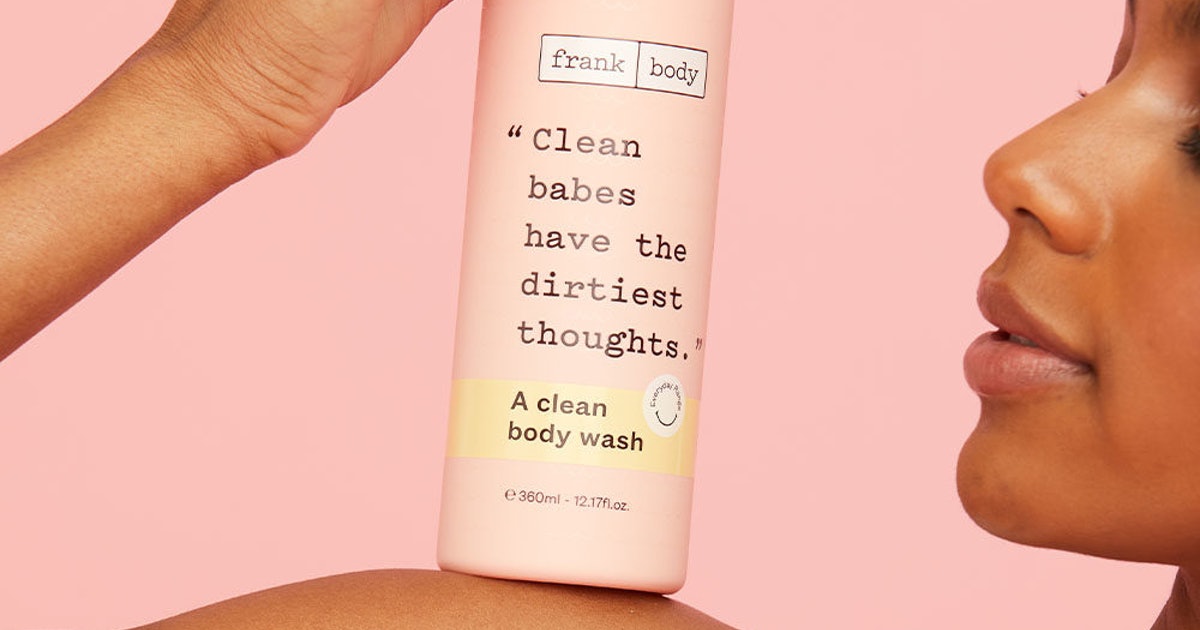
Frank Body is an Australian-based success story, a body scrub company that grew until it now sells in over 149 countries around the world. Not having the budget for TV commercials, they used influencer marketing to grow their Instagram account within 12 months to 350k followers. Using hashtags to promote viral concepts, they reached out to influencers and micro-influencers, and managed to generate consumer-created content with their brand hashtag.
Case Study
Ozi Choice is an Australian milk powder and milk vitamin brand, which asked Starship for help with a micro-influencer marketing campaign, as part of our on-going relationship. Designed to be dynamic and adhere to a small budget, the campaign was targeted at attitude-leading mums with young families to push the Ozichoice Milky Bites vitamins.
As the product didn’t have a high shelf presence, Instagram stories were used creatively in this campaign to help them and potential purchasers find and buy the product. Essentially, we used influencers, to get influencers.
Despite only using 8 micro influencers, the campaign had over 14,000 total engagements with what we call ‘high power’ Mums, who are highly engaged themselves - thus we’re utilising Instagram stories to spread brand awareness to the client’s now engaged, preferred audience with a very high ROI.
Things to watch for
As an influencer has to be trusted to create their own work, brands should also carefully consider the influencers they use. Research needs to be done into their previous content, as they should hopefully align with the brand’s values (no offensive content etc).
Brands should also check whether an influencer’s followers are real or fake using online tools. Ideally, influencers are people whom the brand are already aware of within their industry due to a high level of follower count and trust. Partnerships with people like this may be expensive, however, and depending on the product, a good result might be to split between a number of smaller or “micro” influencers.
As Instagram is the most popular tool for influencer marketing, be sure to understand how to properly use Stories, hashtags, posts, and its other features — including the algorithm. Only then can an influencer strategy be worked out to the brand’s advantage.
Alternatively, using an agency that might recommend a good influencer strategy to you is also a possibility. As mentioned above, Starship has used influencers on behalf of our clients before to reach successful KPI outcomes, and we’ll be happy to discuss the matter with you should you have any questions. Get in touch!

Brand Names that are now Generic

“When something becomes so pervasive in everyday society as a result of its own fame, there’s an argument that it no longer represents the brand, it almost represents the action. So as a result of that, in trademark law, you cannot trademark things that are descriptive or generic in nature.”
- Onesies: Onesies is still a registered trademark, but have become widely used in referral to one-piece jumpsuits.
- Bubble Wrap: While technically still a registered trademark of Sealed Air, it’s now effectively a generic trademark.
- Crock-Pot: While people often refer to slow-cookers as crock pots, Crock-Pot is still registered, and a few years ago had to respond to an unexpected PR nightmare. Basically, a fan-favourite character from the show This is Us died after a crock pot accident set the draperies on fire. Crock-Pot had to create a twitter account to deal with freaked out fans throwing away their Crock-Pots, and even asked NBC for help to correct the misunderstanding.
- Dumpster: Trademarked by the Dempster Brothers and patented by them in 1995, the trademark has since been expired or cancelled.
- Jacuzzi: Still trademarked, but often used as a generic name for a hot tub.
Avoiding Genericism - A Xerox Story
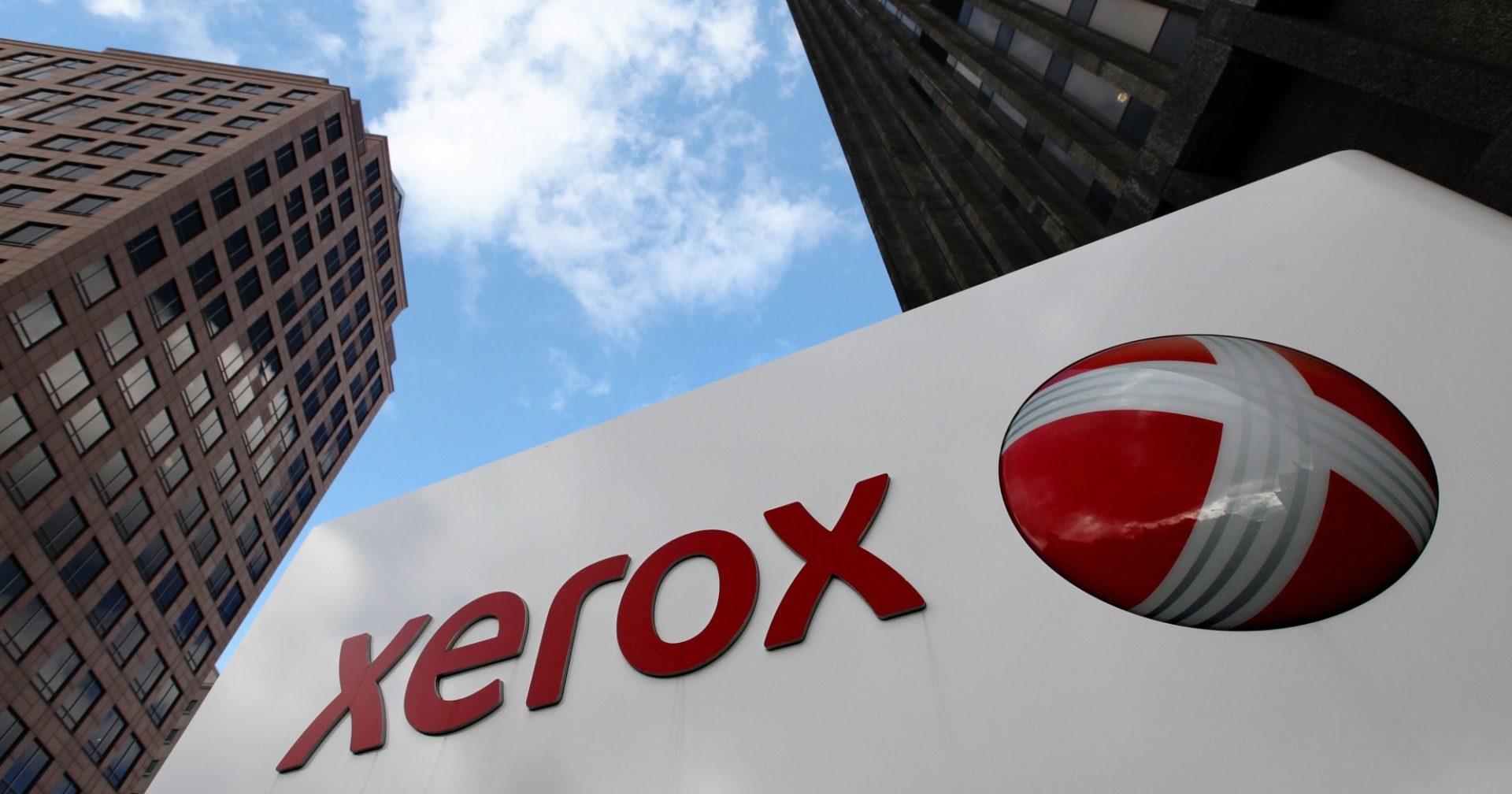
Bayer Co. v. United Drug Co. was a seminal case in which Bayer lost its trademark for Aspirin to what experts now refer to as “genericide.” That 1921 case set the table for the modern standard that courts currently follow: If a brand name is understood by the public to refer broadly to a category of goods and services rather than a brand’s specific good or service, a company may be at risk of losing its trademark. Escalator, cellophane, and laundromat have all lost their trademark status to genericide.
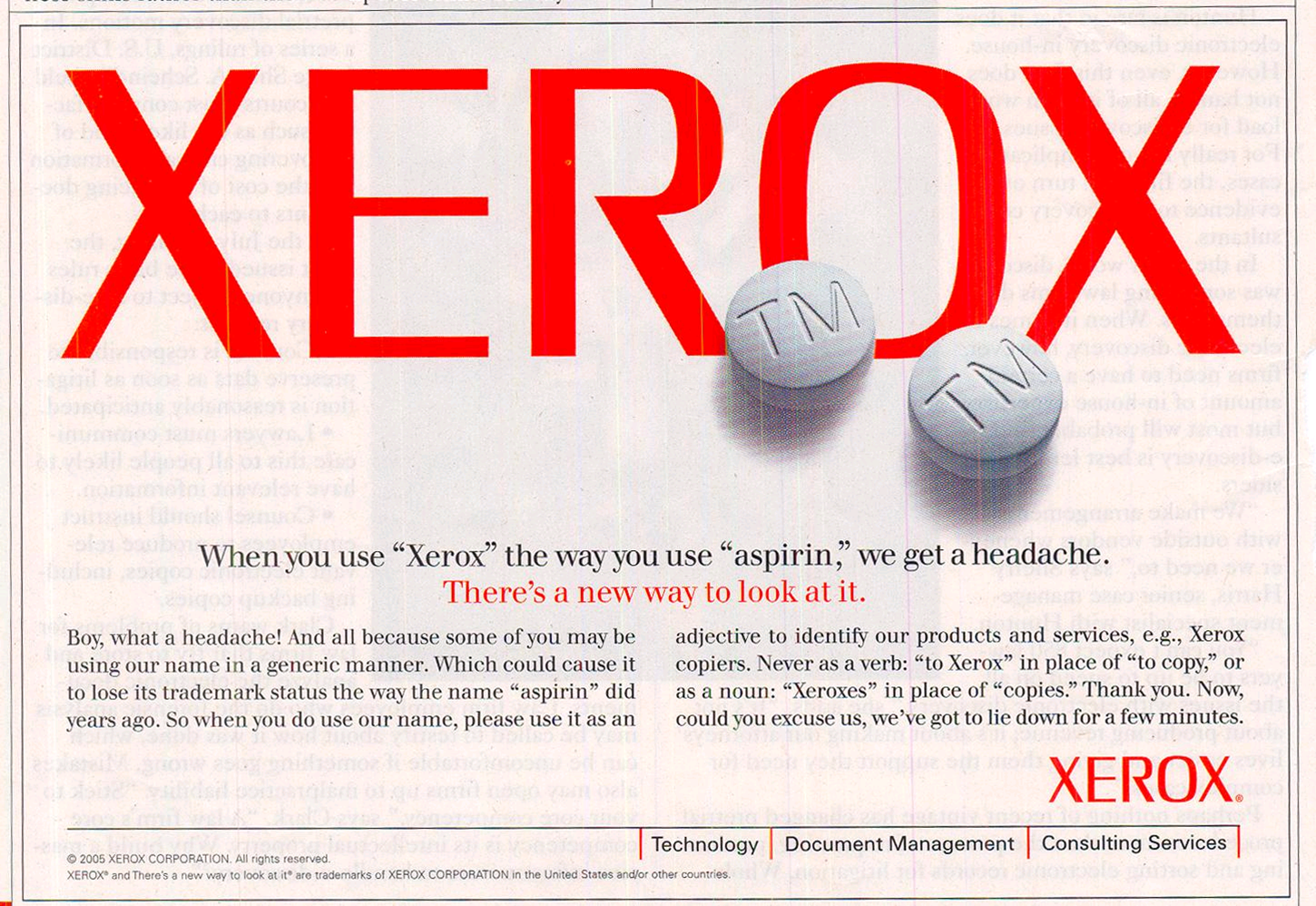
Xerox’s IP counsel and marketing team works hard to ensure Xerox’s survivability as a registered trademark, avoiding what happened to Zipper and Aspirin. They do this by raising awareness that ‘Xerox’ is a registered trademark, educating people who use the trademark wrongly. They work with dictionaries, run ads, and also do work with Wikipedia and so on. So far, it seems to be working. Xerox still has its trademark. Other brands, like Velcro, have also run ads hoping to avoid this fate.
A Good In-Between
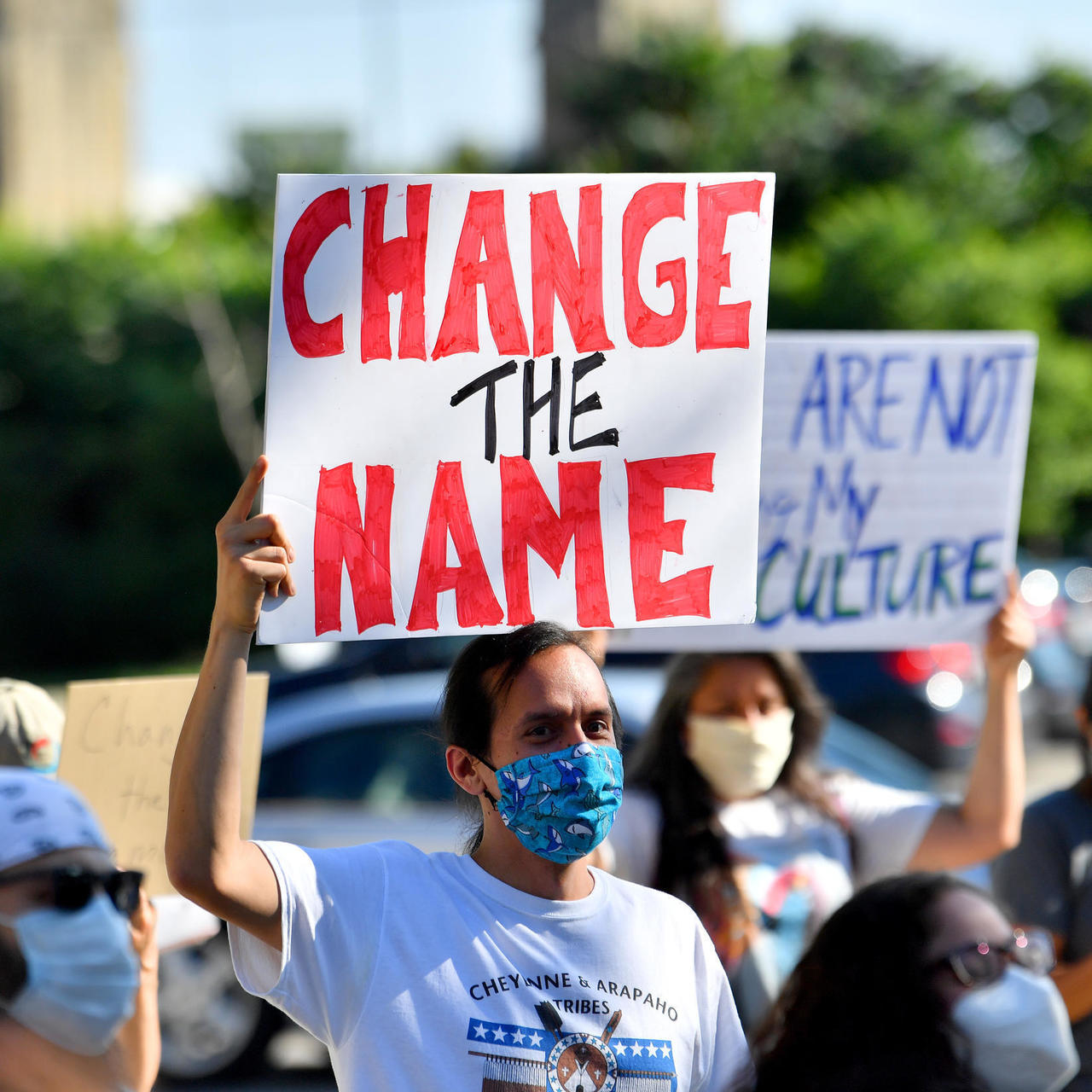
Choosing a Brand Evolution or a Full Rebrand

- Budget: Rebrands are expensive
- Timing: Rebrands will take more time than a brand evolution
- Stakeholders: What are your stakeholders’ appetite for change?
- Last update: Is your current branding a year old or 10 years old?
- Existing brand equity: If your brand has a lot of history behind it, a full rebrand might mean giving all of that up.
- Reason: Are you updating to modernise the brand (e.g. legibility), for PR (like BP after the oil spill disaster), or because it’s the right thing to do (like Coon cheese, Washington Football Team and more)?
- Target audience: Are you looking for a new audience, or adapting to a new audience?
- Business matters: Was there a merger or some other issue that has spurred this consideration?
Is this a Brand Evolution or a Revolution?
You might have seen some changes in the works in popular brands that appear to be attempting to toe the line between a rebrand and a brand evolution, such as Burberry and other fashion brands:
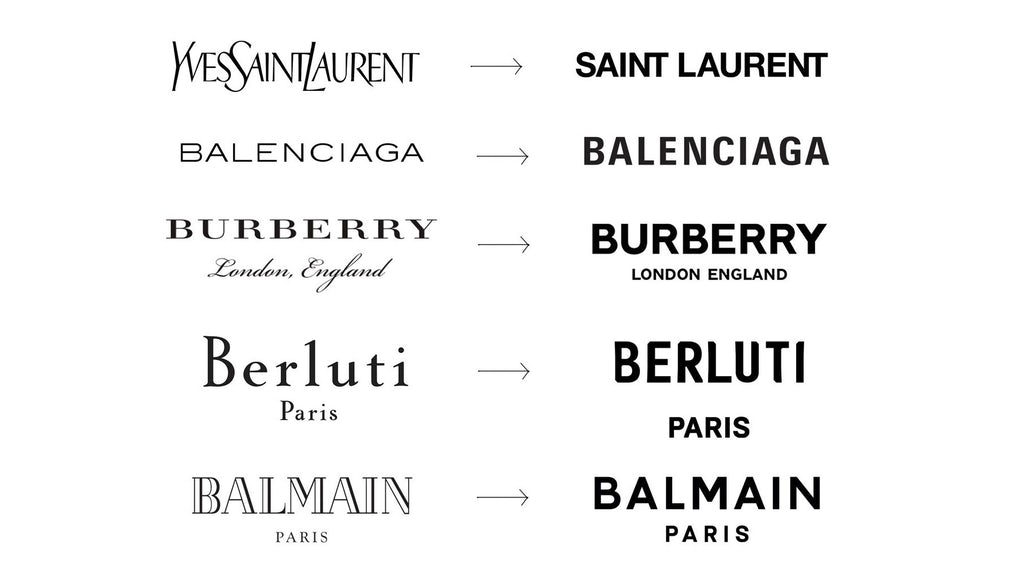
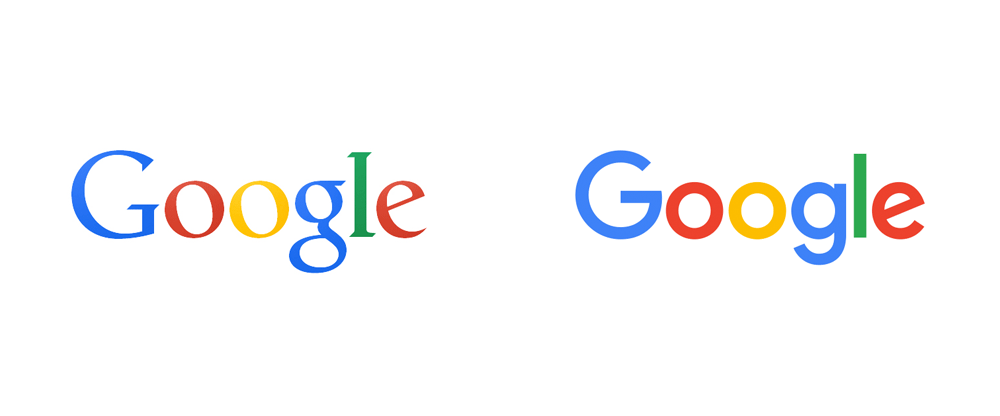
Hard to remember that the wonky serif used to be what Google looked like compared to the slick brand suite it has now, which it’s still rolling out across its other offerings like Gmail and Drive. Not everyone was onboard with the rebrand, nor has everyone been onboard with the new icons:
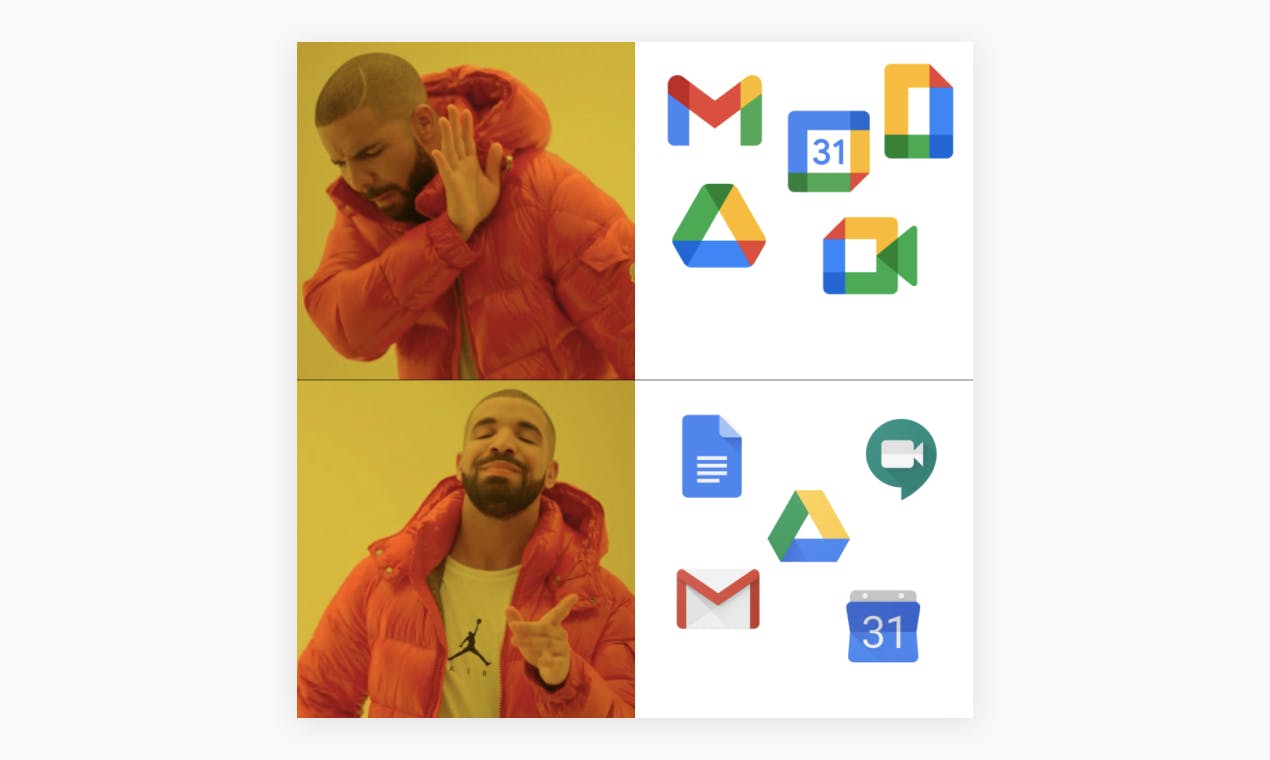
Still, given time, people will get used to it, and the design philosophy behind the change — to reinforce the brand by making the designs look like they belong in the same family — will likely stick. Google emerges with a stronger brand presence, one that’s more legible across the new digital age.
In Short

"Some have benefited from border closures and consumers spending more time at home, whereas others in the services, apparel and catered food market have borne the brunt of the downturn [...] The polarisation of the market means that there is not just one narrative around COVID-19, but many." -David White, National leader of Deloitte’s retail group.
Online, Online, Online
- eCommerce capability on your site
- A responsive site to maximise your SEO
- A social media presence, along with adspend if you can afford it
- Decent photographs
- Decent copy
- Stand out from your competitors – offer something different, say something new
- Understand your target market's purchasing choices and play towards that. Have an end goal in mind, or what we'll call a Key Performance Indicator (KPI) in the industry. Anything from a monthly sales growth target to a target average purchase value.
Seasonal Products

Holiday Season Retail Offers and Lures
It might be too late to offer any new products or get eCommerce started so close to Christmas, but you could still run a seasonal offer now if you haven’t already. Free or discounted shipping will go a long way this year, or even a little gift or thank you Christmas card in anything you ship out. If you’re a store that might be in a Council initiative zone, make a play for voucher holders over social media or in-store with some smart messaging. There are still initiatives that you can run, even this close to the season. Better something than nothing, right?
In Short
Victorians are likely to keep spending through the lead up to the holiday season, and savvy retailers might be able to get a foot through the door for their share of the pie if they act quickly. Bolster your online presence, create seasonal products or tie-ins, and lure customers in with value-added offers — and more. Need more help? We're happy to have a quick chat.

You've probably seen the news by now if you're anywhere near part of the industry: due to various reasons including the Australian Federal Government's decision to ban Huawei from 5G networks and forming a new defence pact with Japan, China has hit Aussie wines with tariffs, ranging from 107-200%. The wine industry is only the latest casualty of China's growing disagreement with Australia -- the tariffs started on barley earlier this year, moved on to cotton, lobsters, timber and more.
The chairman of Yalumba Wines, Robert Hill-Smith, has called the $1.3billion export market to China a "basket case". 39% of Australia's wine exports were sent to China prior to the tariffs, a market that has since effectively collapsed. This has two immediate issues for local wine producers big and small:
- Softening demand and prices: in the third quarter of 2020 as it is, the volume of Australia's wine exports fell in value by 20%, and is likely to fall even further post-tariff; and
- Wine from the 800 or so producers that would've gone to China flooding local and alternative markets.
If you're an Aussie winemaker of any size, either of the above would be a cause for concern. Given the pandemic, the oncoming recession, high supply and lower demand and prices, a possible second fiery summer season and worse, it's probably tempting right now to sidle into your cellar, crack open a bottle of your finest, and drink until the new year. If that's what you're doing, we respect you -- more power to you. If not: we're here to help.
A Hardbasket Year for Everyone
The below image sums up what the year has been like in general for everyone:

Australia's economy hasn't done as badly after COVID-19 as the International Monetary Fund had projected, though it'd likely still take years to recover from high unemployment and government debt. The economy is slated to contract through the end of this year before finally growing slightly by 3% in 2021, though unemployment is forecasted to increase to 7.7% through 2021. While the Federal Government's plan is focused on trying to get businesses to hire more and more securely, if a vaccine doesn't arrive, or if there's further outbreaks or other shocks to the system, things could backslide.
Consumer sentiment might rise next year, but will remain negative overall -- Aussies are projected to remain uncertain about the economy, job losses, house prices and more. Household discretionary income is expected to decline by 7.8%, particularly after the government scales back fiscal stimulus. On top of all that, Victoria lost its AAA credit rating. There was a spending spike after lockdown, but with households tightening their wallets because of uncertainty, job losses and worse, 2021 looks set to be another challenging year for wineries. If all this is making you eye your cellar door and your emergency batch of wine, we don't blame you. Navigating a way out is likely going to need any measure of luck, a strong brand presence to stand out on the shelf next to your competition, and a bit of creative marketing.
Cool Things Other People are Doing
Bonterra Organic Vineyards' 2020 ads poked fun at "wine snobbery" while reaching out to wine fans who might enjoy not just the lighthearted humour but the brand's focus on sustainability, creating a memorable ad that still pushes the client's brand promise. In today's saturated space, marketing will not only need to push the envelope to get noticed, but also to convince pessimistic customers to commit to purchasing one wine brand over another that they might already prefer.
WBM also asked a few winemakers what they would do if they were given $1m for marketing. Answers ranged from going to France for research, hiring a marketing manager, and significantly improving digital spend. Going forward, an increased and robust digital presence is likely the best way forward for any beverages producer: from ad spend to partnerships, social media initiatives and more. With 75% of millennials saying that they'd spend more on wine if they could, that's also a market to address seriously, with creative that has to be made to appeal to the millennial market.
Vee On Yay: A Starship Case Study
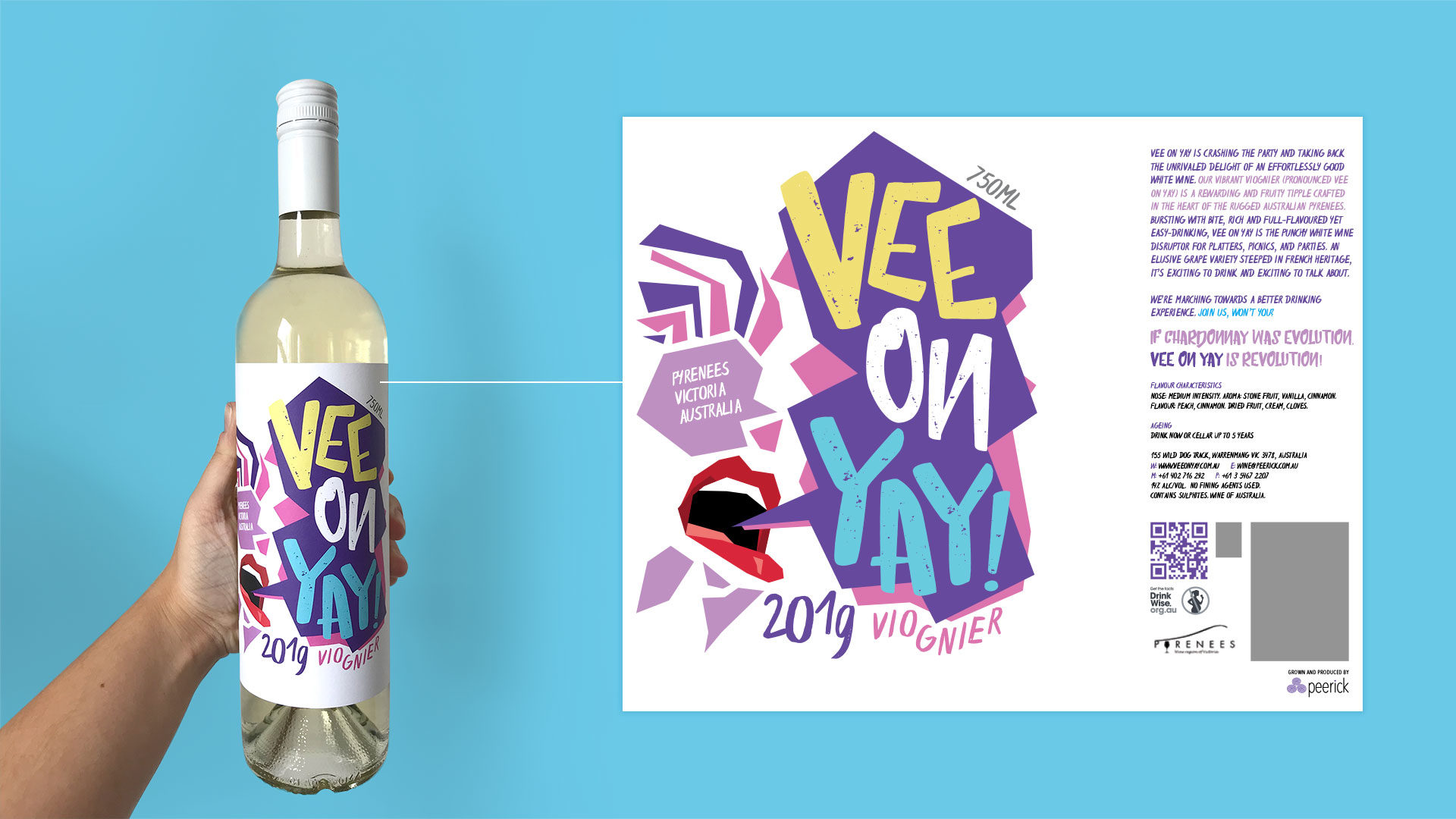
Our client, Peerick, decided to create a Viognier line marketed at appealing to millennials. Poised to become the largest wine-drinking generation by 2026, we decided to make an early start: by creating a wine label that looked fun, stood out as something different on the shelf, and all for a wine that tasted as great as it looks, all the while being easy to drink.
Some tips:
Buckle down: it's going to be rough seas ahead in 2021. A few things that could help tide you over:
- Find new markets to appeal to -- whether overseas, or to new demographics, or more
- Partner with other brands and events, even unusual, left-of-field ones
- With domestic tourism likely going to be stronger going ahead before a vaccine is released, push cellar door events where possible
- Go digital -- both with online deliveries, newsletters, wine clubs, social media, and other initiatives
- Pray to the wine gods old and new
Best of luck. If you'd like to have a chat about the industry moving forward, get in touch.
It’s been a scary few months, but Australians stepped up to the challenge. Whether it’s been working from home, keeping kids at home, or doing necessary delivery, healthcare, and other work, things in Australia so far look under control so far, enough that elective surgeries are opening up and restrictions are beginning to relax. Projections for the post-pandemic economy predict a global recession: millions of people around the world have already lost their jobs, stock markets are see-sawing up and down, property prices are crashing, large companies like Neiman Marcus and Virgin Airlines have declared bankruptcy, and oil has dropped below $0. The effects of the pandemic are likely to be felt by Australians and Australian companies for a while. With some luck and forward planning, it’s possible to mitigate the fallout – and that’s where we come in. Here are some strategy tips to help your business get back on its feet.
Post-Pandemic Trends
- Watch that supply chain: As manufacturing shut down in China, the effect was felt across the globe. Businesses that were over-reliant on one part of the world for manufacturing were left in the cold. If you can make it locally, make it local. When the panic buying first hit Australia, products that were largely manufactured locally (such as toilet paper) were able to ramp up production and recover consumer confidence quickly. If you can afford to start up your own delivery service instead of being beholden to platforms that might consider you not essential enough or might become overburdened from general demand overnight, do so.
- Go digital: Social distancing has led to a boom in online and contactless transactions. This isn’t new – the outbreak of SARS in China caused its online retail platforms Alibaba and JD.com to become far more popular than they were. The current pandemic is likely to have the same effect, but globally. The behavioural changes brought about from the pandemic are likely here to stay for a while: if you haven’t been considering an omnichannel approach to your stores, it’s about time. Via Inside Retail:
This new-world customer is now more comfortable with online transactions, fewer real-life interactions, and trained to constantly sanitise in public spaces. This, of course, may fade out, but some of these behaviours, habits and trends will stick. The physical store will be forced to change; it will need to be a strong enabler for online shopping, allowing for a much more seamless back and forth, with savvy mobile shoppers expecting faster, more convenient and smarter transactions. In China and Japan, stores are already set up as highly tech-enabled, allowing the customer to shop in-store but at the power of their mobile device. Product information could be discovered by a quick scan of a QR code; customers could roam the store purchasing products as they scanned, paying for it in the moment via WeChat.
- Reduce your physical footprint: As much as having a brick and mortar store will add to your brand’s credibility, it’s likely that retail will shift slowly towards smaller footprints or to a mixed retail and services outlook. Now that people are getting more and more used to getting things online overall, you’d need to either have an extra offering in-store, or just a smaller physical store. Small retailers – now’s also your chance. The playing field is starting to level down.
- Preserve customer and staff safety: Stores that were quick to put into practice measures that protected customer and staff built trust in their brand, while stores that put through half measures (or measures that didn’t work well at all, reportedly), began to generate bad press. In an increasingly information-rich world where people are willing to shop according to their values, showing a willingness to risk your own staff in the name of profit will be something people are likely to remember and avoid. On the other hand, brands that were responsive to their customers’ and staff concerns quickly shored up customer relationships, building lasting goodwill.
- Evolve ad strategies: Ad spend dropped off a cliff during the pandemic, or were quickly pivoted to COVID-19 related messaging. Brands with more digitally native platforms and campaigns were quicker and more nimble, which came off as being more responsive to their customers.
- Keep lower customer spending in mind: In a time of record unemployment, Australia looks set on entering a serious recession despite government stimulus. One in ten Australians have said that they intend to spend less after the shutdown, and will likely change their habits:
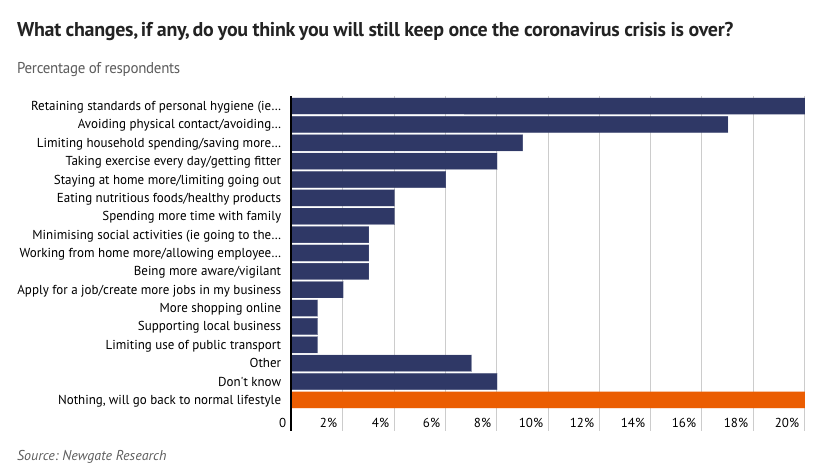
Brands will have to adjust to this new spending environment, by looking closely at what they’re offering and how they’re offering it.
Want to know more? Like to have a chat? Give us a call.
Like us, you may be one of the many Australians who have decided to do their bit and stay home during these difficult times. You might be doing this because you have to — as one of the people who flew in from overseas and are self-isolating for two weeks, or because you’re working from home, or because you’re not feeling well (if this is the case, we hope you get better soon). Or you might be one of the people caught up in the sudden downturn, finding yourself unfortunately at loose ends. It’s ok to take a break. Have a long drink. Exercise. Hug your pet. Practising self-care isn’t some hippie thing off the yoga-enthusiast corner of the internet: it’s an essential part of everyone’s well-being, key to not feeling overwhelmed by the constant barrage news.
Not looking to take a break? Thinking of setting up a small business in your own home? We’re here to help.
The Basics of Home Business
There are some things you’d have to read up on your own that we can’t delve into here, involving stuff like legal things, tax, and company structure that you should sort out on your end. We think of this as the skeletal frame of your business: building a strong foundation by ensuring that your business is feasible, legal, and tax compliant. We suggest government resources such as this and this as a start. Do the research. We can’t emphasize to our clients how important research is to setting up a healthy, future-proofed, agile business. Think about when your business is meant to get going, and how it’d respond to shocks in the industry — like the current pandemic. It’s not enough just to have a cool idea. Running a successful business isn’t just about the fun stuff: you have to build the foundations of your structure before opening your doors. And who knows: you might be able to find a grant or something similar that can get you started.
All sorted? Now we’ll move into the meat and bones of the matter.
Research… from Home
There are no shortcuts about it — research is the best thing you can do for your future business. Take a peek at the rest of the industry you’re about to get into. Identify what you think are your top 3-5 competitors. Don’t just look at what they’re selling, look at their brand as a complete whole: what kind of language are they using, formal? Informative? Positive? What kind of feel does their branding have compared to their price point: do they look and feel like a premium brand, an affordable brand, or a niche/boutique brand? Where are they sold? Do they have an online presence, and if so, what kind of social media following do they have? How active are they? What kind of website do they have?
Now that you have a better idea of what people in your space are doing, now look up the 3 brands that are in your “ideal” space: whether in terms of brand performance, reach, market space, and so on. What are they doing that’s different? How does their brand look? Why do you like them?
Once you have all these questions answered, think about your offering. Where would your brand sit in the market, in terms of who you’re selling to, your price, your service/goods quality? What are you doing that’s different? What’s your brand mission? Don’t rush this part. Some people can and will take years to identify their niche in the world: and the more in demand, more niche it is, the better you’d do. Best of all, you can do the bare basics of all the above steps in this section from the safety of your home. Good for those long self-isolation days.
Design and Marketing from Home
This is the bit where we usually get involved. However, if you’ve just started and have no capital, you can work out something basic until you have the funds to get in professional help. Here are some basic tips:
- Brand Language, aka How Your Brand Communicates: Where possible, be positive and be professional, even if it’s meant to be a “fun” brand. Be respectful of people. It isn’t being “PC”, it’s just good business. Bad news gets around quickly in this inter-connected world, and people like to align themselves to brands that reflect their values. If they don’t like you because they think you’re rude / annoying / offensive, they might boycott you — and worse — tell their friends.
- Branding: Ideally, you should get a professional involved, but for a “standby” basic brand, you can do something to put on preliminary packaging/your site/your media. There are a few free fonts out there that are great, like Fira Sans, Roboto, and Playfair, that you can find on a quick search. Put your brand name in bold / light / all caps depending on what feels right. It’s just a standby look for you to get started with, so it isn’t the end of the world. Use the same font or another good workhorse font for everything. Make sure you use a max of 2 fonts. You can get pros like us to give you a refurbished look later.
- Don’t use Comic Sans.
- Or Arial.
- Or Times New Roman, or Papyrus, or Curls, or Wingdings, or Calibri, or Trajan.
- If you really have to, fine, Helvetica is all right… bland, but better than Arial.
- Colours: Don’t go too crazy. Black and white is a classic look, if you don’t want to have to decide right now.
- Graphics: At this point, we wouldn’t recommend trying to do one by yourself. There’s a science to brand mark design, and mocking one up on Microsoft Paint really isn’t going to cut it.
- Free programs like Canva will work for now for you to create presentations and other documents. It’s basic, but it’d do until you can get professional help.
- Set up your social media — carefully. Don’t make names like NewCompany123.
- Free drag and drop website builders like Wix can work for basic sites, but we wouldn’t recommend using them in the long run if you need anything complex. At Starship, we usually build sites off WordPress or other similar platforms for clients using agency tools, but web development and design is difficult for many clients to understand. If you need eCommerce capacity, try Shopify.
Basic ads
Here’s another part where you usually call in professional help. You do need a coherent branding and social media strategy, or you might be throwing in good money for nothing. If you want to give it a shot, though, here are some basic tips:
- Read the guidelines of the platform you’re intending to use.
- Research which platform works for your target audience. Different people use Facebook, Instagram, TikTok, Twitter, and others.
- Facebook’s ad manager is free to sign up to, and in its basic form, is fairly easy to understand. You can target audiences by interests, geographic location, and more. Take a look.
- Think about what you want your ads to do, and set yourself some realistic goals (we call them Key Performance Indicators). Do you want to drive more people to your website? Do you want people to buy a product? The more you can drill down on your goals, the easier they will be to meet, and the more effective your advertising will be.
You Get What You Pay For
As with most things in life, you get what you pay for — but sometimes, there’s only so much you can pay for at the start, and that’s completely OK. There’s only so much you can do from home, and besides, it’s important to get the basics down anyway. Getting a headstart on all of the above will help you build your own understanding of what you’re trying to do as a business, as well as get you a foot through the door. Once you get some traction, you can bring in the big guns.
Looking for more advice? Give us a call. We’re here to help.

